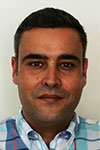An integrated approach to defining well placement strategies for heterogeneous CSG reservoirs
Luke Brown A , Paul Hultzsch A , Ananda Shankar Roy A , Alexander Neber A and Michaela Farrow ASchlumberger
The APPEA Journal 55(1) 49-58 https://doi.org/10.1071/AJ14004
Published: 2015
Abstract
Operators developing the vast CSG resources held in the Surat and Bowen basins of Queensland, Australia, face significant challenges. Given the heterogeneous nature of CSG reservoirs, and often sparse data from wells and 2D seismic, there are significant uncertainties regarding reservoir quality and productivity. The prolific number of wells required to extract the economic reserves (more than 30,000) requires workflows that can efficiently integrate information for rapid development planning.
Traditionally, most of the efforts dedicated to assessing uncertainties in CSG reservoirs focus on the estimation of the gas-in-place (GIP), and how it varies laterally. Variations in productivity (mainly dependent on permeability) are usually more abrupt, have a larger impact on project economics, and are far less understood than the GIP. Authors such as Chopra and Marfurt (2012) have recently developed analytical methods using 3D seismic attributes to identify fractured areas with higher permeability. As well as permeability, other factors influencing productivity, such as GIP, thickness, depth and saturation, must be combined to define a complete well placement strategy.
In this study, the authors propose a holistic approach for the assessment and integration of the uncertainties in CSG reservoirs, using the Baralaba Coal Measures in the Bowen Basin as a case study to demonstrate the workflow. Various seismic attributes are used to identify fracture drivers associated with faulting and folding around the Burunga Anticline structure, and map areas predicted to have higher permeability, calibrated against well production. Chance-of-success mapping is used to integrate the permeability heterogeneities with traditional well-derived maps of coal properties, such as gas content, to isolate sweet spots in the CSG reservoir. The integrated model is transformed into geological pseudo-cost and combined with surface development costs and restraints to automatically generate potential well placement scenarios.

Luke Brown has a Bachelor of Science First Class Honors (Exploration Geophysics) from Curtin University in Australia. He was awarded the WA CSIRO University Postgraduate Scheme scholarship to continue post-graduate research at Curtin University, researching theory and numerical and physical modeling of fractured rocks. Luke has worked for Schlumberger for eight years as a geophysicist, and is presently based in Kuala Lumpur as Exploration Business Development Manager for Asia. |

Paul Hultzsch has a bachelor’s degree in mathematics from the Universidad Central in Venezuela and a Master of Arts in petroleum economics from the University of Texas in Austin. He is a geophysicist with more than 15 years’ experience in the oil and gas industry. Paul presently holds the position of Geoscience Manager for Asia-Pacific at Schlumberger Information Solutions, based in Kuala Lumpur. |

Ananda Shankar Roy has a Master of Technology in applied geology from the Indian Institute of Technology, Roorkee, and a bachelor’s degree in geology from the Jadavpur University in India. He has 10 years of experience in the oil and gas industry and has held position in Baker Atlas, Halliburton and Schlumberger. Ananda is presently based in Perth, Australia, where he holds the position of Senior Geoscience Workflow Consultant for Schlumberger Information Solutions. |

Alexander Neber has a Diploma in Geology (1996) from Frankfurt University, Germany, and a PhD in sedimentology from the University in Cologne (2000). He worked as lecturer at Cologne University, teaching the development and implementation of 3D geological modelling methods for urban and regional applications. Alexander then went on to be the Managing Director of a company specialised in training geological survey staff in 3D mapping. Since 2007, he has worked in various technical roles related to petroleum systems modeling in Europe, Africa, Asia and Australia, and as been a Geoscience Business Manager in Australia. Since mid-2014, he joined the Schlumberger Software Technical Marketing group in London, leading the geology & modelling team. |

Michaela Farrow received her Master of Science at Manchester University, UK, in 2000. Since then, she has worked in The Manchester Museum, UK, in various roles, as a Senior Technician in Kingston University, UK, and moved to Schlumberger in 2005. She is presently Senior Consultant Geologist in Brisbane, working on geological and simulation scale models specialising in advanced structural, facies and petrophysical modelling and uncertainty workflows. These workflows are in the Petrel and Techlog Platforms, and principally on coal seam gas as well as conventional oil and gas. Member: Society of Petroleum Engineers (SPE). |


